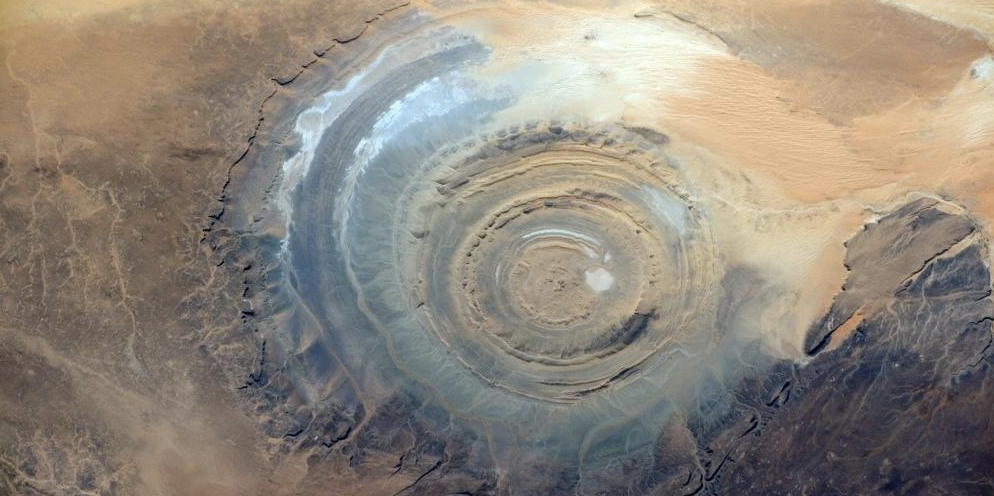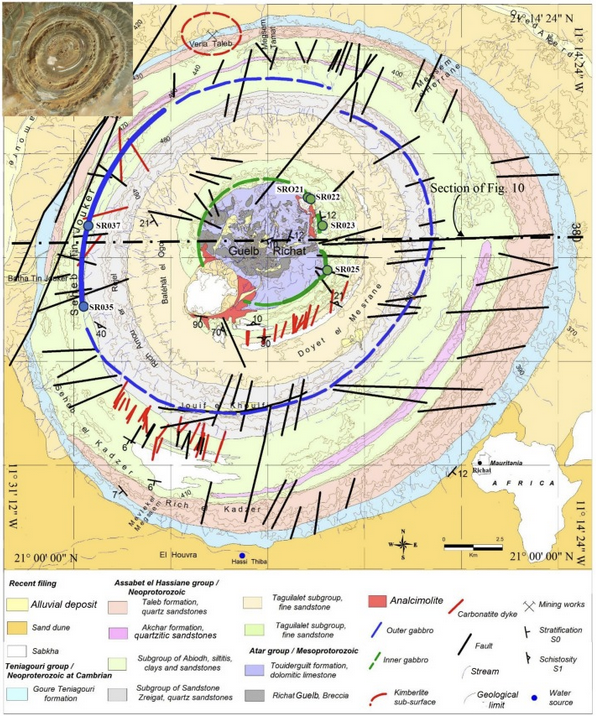What is the age of Africa's eye?
18 July 2024
A study published in June 2024 in the journal Lithos traces the dating and geological history of a particular geological structure: the Eye of Africa. Hervé Bertrand, from the Laboratoire de géologie de Lyon, took part in this study.

Considered by some as the site of Plato’s Atlantis, and by others as an extraterrestrial city, the Richat structure in Mauritania is one of the earth’s most visible geological formations from space. Its intriguing and spectacular concentric shape has earned it the nickname “The Eye of Africa”.
Its shape and composition remain enigmatic for geologists. The aim of this study is to retrace the history of the Richat structure’s formation, based on chronological and geochemical data.

Image : Geological map of the Richat structure
Credits : Abdeina et al., 2024
The analyses focused on the various geological formations that make up the Richat structure, including gabbros, one of the main rocks that make up the Earth’s crust. These magmatic rocks are formed when magma cools following a volcanic eruption.
The researchers used 40Ar/39Ar dating of plagioclase, a mineral found in gabbros, to date the rocks. The analyses do not give a precise age, but suggest that the Richat structure was formed during two distinct episodes spaced 100 million years apart.
The first episode occurred in the early Jurassic, between 230 and 200 million years ago, at the same time as the formation of the Central Atlantic Magmatic Province (CAMP), and is expressed by the intrusion of gabbros into older sedimentary rocks. Analyses show that the geochemical composition of the gabbros corresponds to the most widespread chemical groups in the CAMP.
In a second phase, new magmatic rocks, including carbonatites (rich in carbon) and alkaline rocks, were emplaced deep within the structure, before undergoing significant erosion. This sequence of events led to the uplift and erosion of the entire structure, giving it the shape we know today.